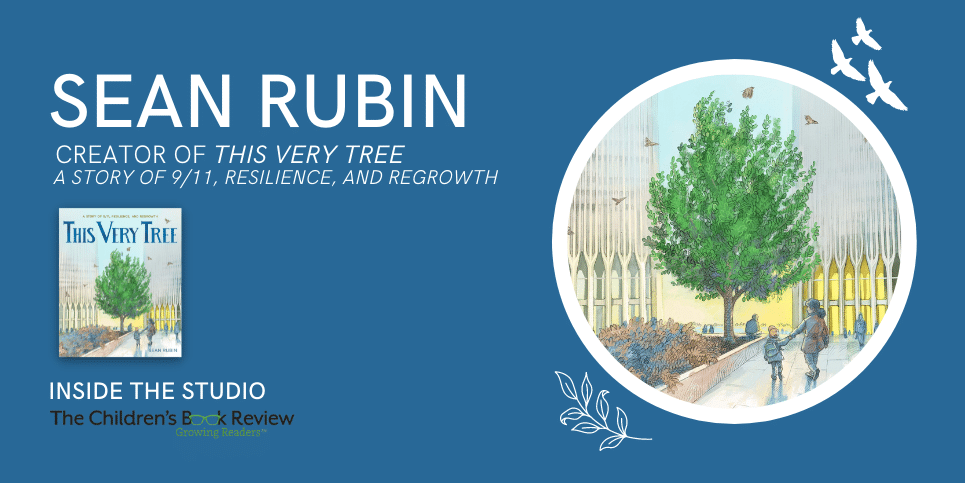Inside the Studio with Sean Rubin
The Children’s Book Review
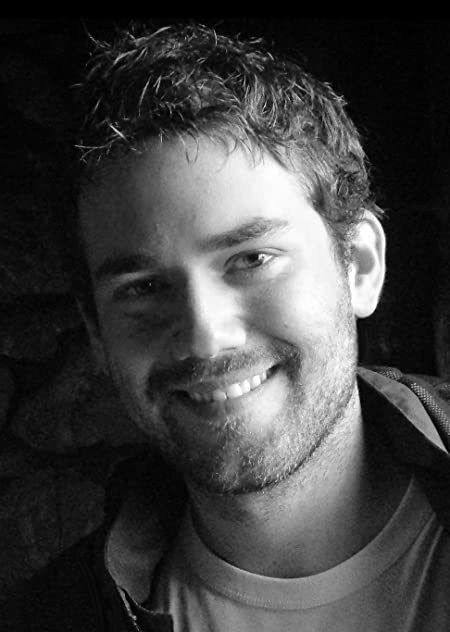
Sean Rubin was born and raised in Brooklyn, New York. He is the illustrator of The Astronaut Who Painted the Moon: The True Story of Alan Bean, and the author/illustrator of the Bolivar series. In 2018, he was nominated for an Eisner Award for Bolivar. Sean graduated from Princeton University, where he met his wife, Lucy. They have two sons and live in Charlottesville, Virginia.
Sean’s latest picture book, This Very Tree: A Story of 9/11, Resilience, and Regrowth, is a touching tribute to first responders, the resilience of America, and the restorative power of community. Come and take a peek inside his studio and learn about his creative process while you’re here!
Inside Sean Rubin’s Studio
I currently work in a room above the garage at our house in Charlottesville, Virginia. I’ve been illustrating professionally for around 20 years, and have seen (probably more than) my fair share of studios and workspaces, but this is definitely one of my favorites. It has three very large windows, and so I never turn on a lightbulb during the day, even if it’s cloudy.
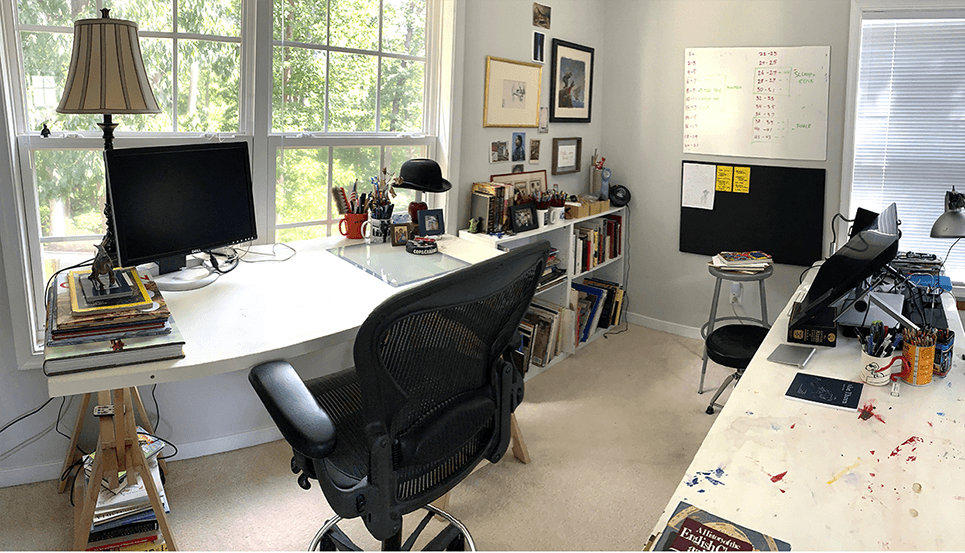
I sometimes share my workspace with an old friend from college, Gordon, who is an engineer and a freelance prototyper (he tests out inventions, which my kids think is much cooler than making picture books. They’re probably right).
My wife Lucy also works in the studio, when she doesn’t go into her office on the other side of town—she’s a forensic psychologist. Occasionally, I even share my studio with our puppy, an Australian Shepherd named Lt. Commander Jadzia Dax. She’s usually pretty good when she’s not trying to distract me at all times!

My two favorite places to spend time and get inspiration are libraries and museums. As a result, my studio is organized to look a bit like both a library and a museum. Here are shelves of books, including my collection of graphic novels, reference books, and all sorts of unusual books that I look at to get ideas when I’m stuck. I also have a collection of picture books and stacks of Calvin and Hobbes, Uncle Scrooge Comics (Carl Barks and Don Rosa), and Jack Kirby.
I mention this because these are the books my kids always “borrow”—Unless someone’s in a Very Important Zoom Meeting, they’re always welcome in the studio, and we set up a nook for them to read whenever they want.
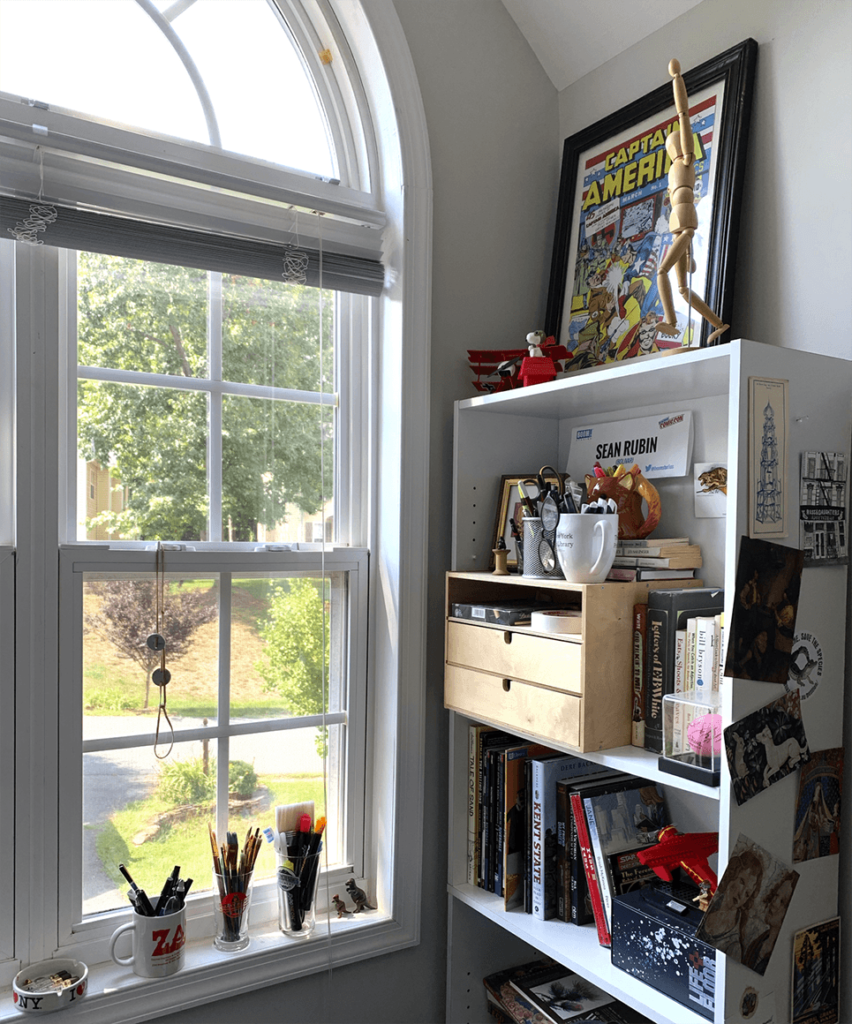
Sean Rubin’s Creative Process
My process combines both physical and digital media. I usually start by doodling ideas on a sketch pad, and I’ll photograph or scan these sketches and continue to work on them on my computer. I use a 32-inch Wacom Cintiq, which sometimes feels a bit ostentatious. For better or worse, it’s a very practical tool for digital painting and drawing.
Once I have a completed rough version of the illustration I’m working on, I print it out (don’t @ me) and redraw the whole thing on a large piece of Bristol paper, using a combination of HB and 2B pencils. I used to trace over lightboxes, but I found that tracing was killing the spontaneity of my line. I don’t know if redrawing everything takes more or less time than tracing, but it’s certainly more fun—for me, anyway.
Once the drawing is finished, it’s time to scan again. And once the line art is on the computer, I edit and color it using Adobe Photoshop.
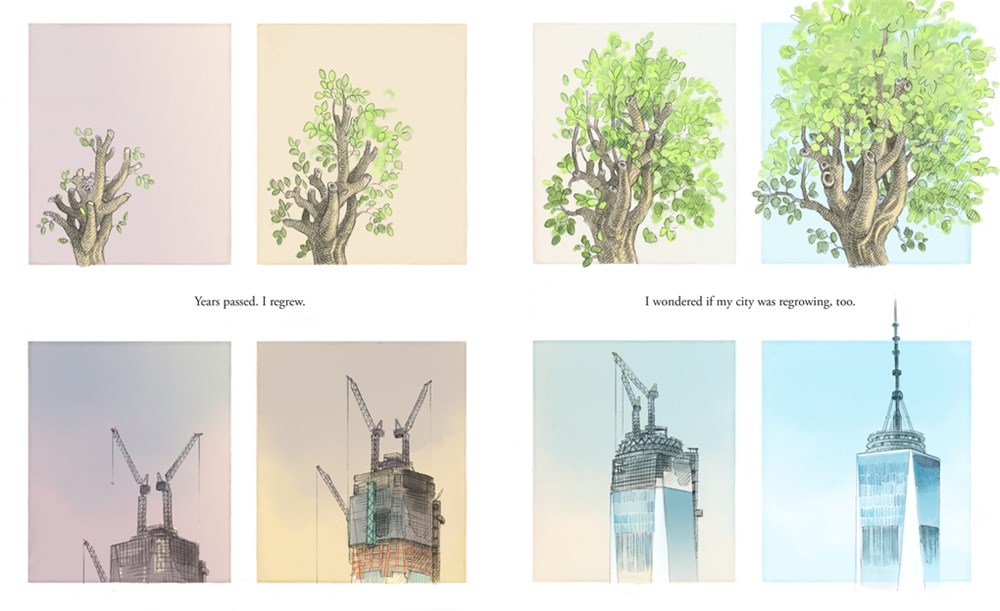
All my final art is digital. That can be a little anti-climactic, but it’s also pretty convenient—I just upload the files to the cloud and make another cup of coffee!
To learn more, visit https://seanrubin.com/.
About the Book
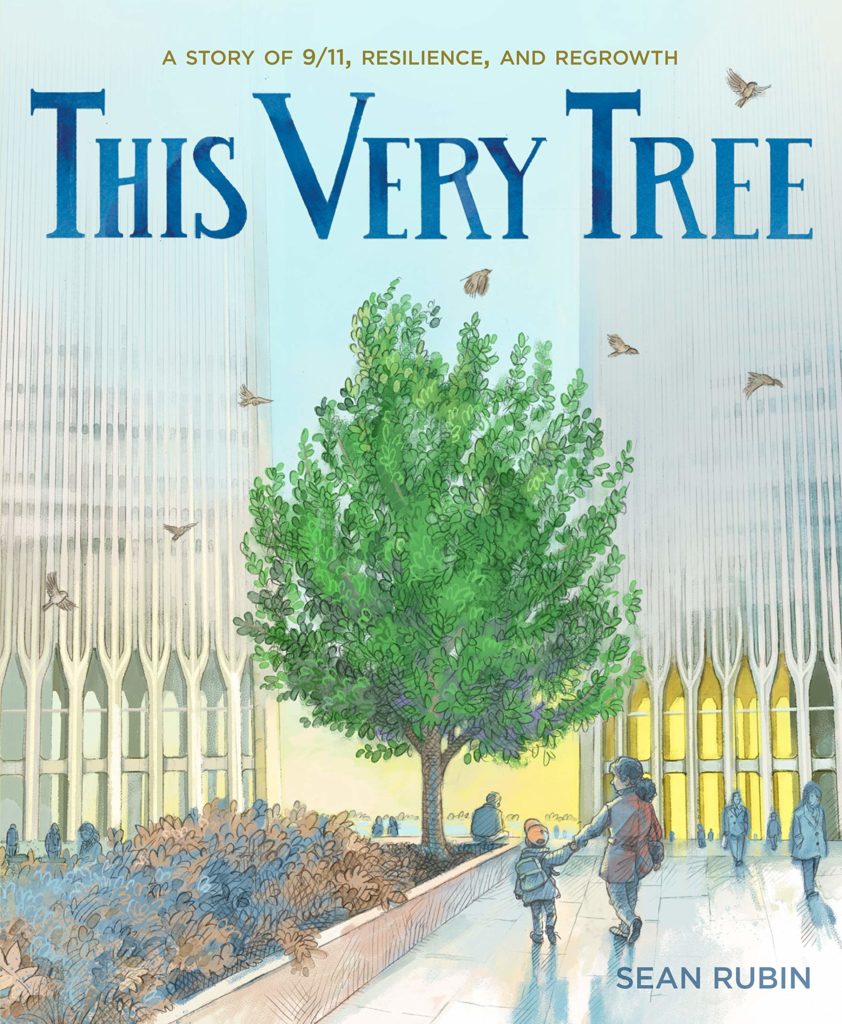
This Very Tree: A Story of 9/11, Resilience, and Regrowth
Written and Illustrated by Sean Rubin
Ages 4-8 | 48 Pages
Publisher: Henry Holt and Co. | ISBN-13: 978-1250788504
Publisher’s Synopsis: A deeply moving story about community and resilience, from the point-of-view of the Callery pear tree that survived the attacks on September 11, from Eisner Award-nominated author-illustrator Sean Rubin.
In the 1970s, nestled between the newly completed Twin Towers in New York City, a Callery pear tree was planted. Over the years, the tree provided shade for people looking for a place to rest and a home for birds, along with the first blooms of spring.
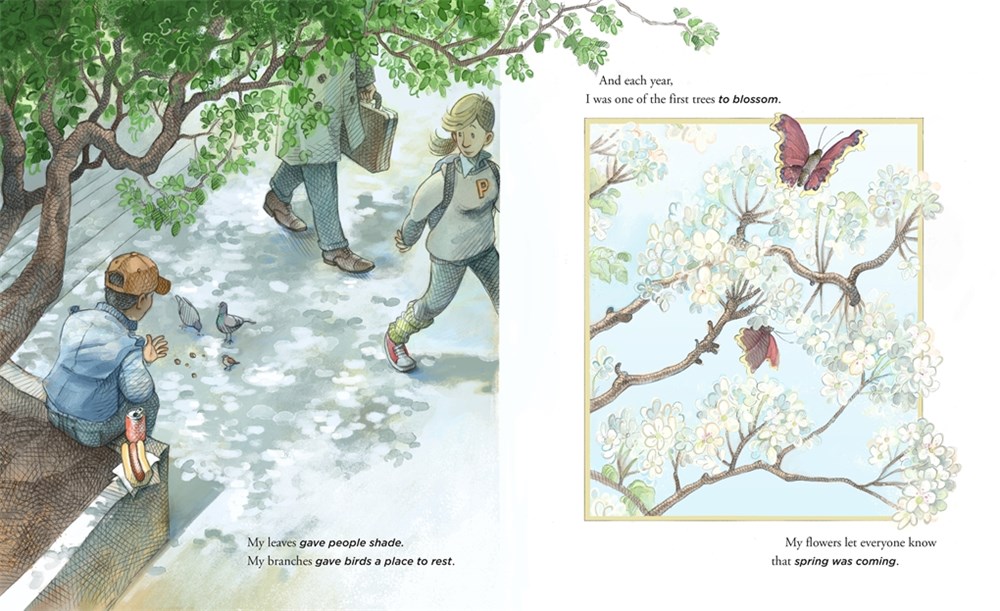
On September 11, 2001, everything changed. The tree’s home was destroyed, and it was buried under the rubble. But a month after tragedy struck, a shocking discovery was made at Ground Zero: the tree had survived.
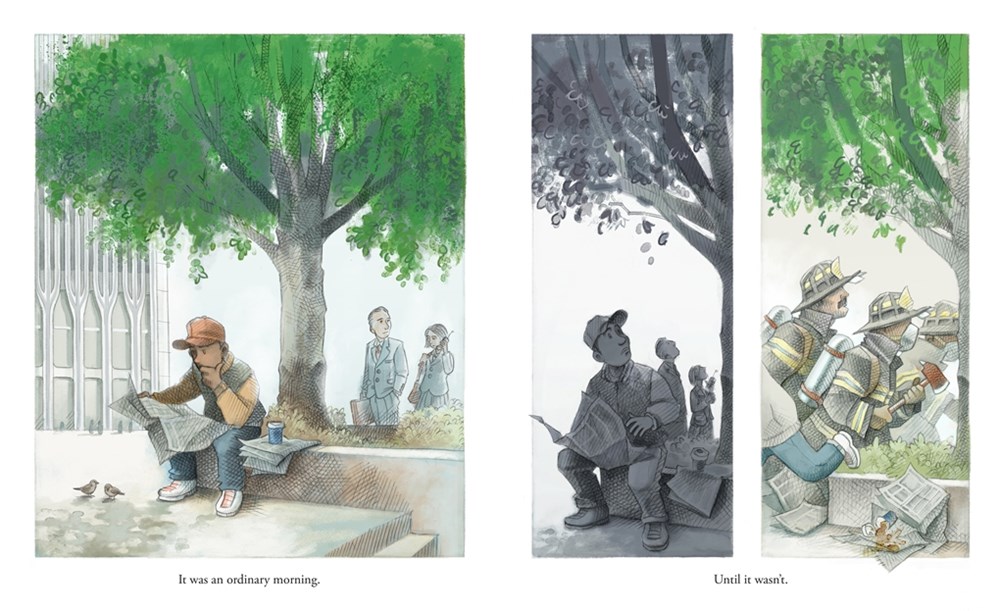
Dubbed the “Survivor Tree,” it was moved to the Bronx to recover. And in the thoughtful care of the New York City Department of Parks and Recreation, the Callery pear was nursed back to health. Almost a decade later, the Survivor Tree returned home and was planted in the 9/11 Memorial to provide beauty and comfort…and also hope.
This is the story of that tree―and of a nation in recovery. Told from the tree’s perspective, This Very Tree is a touching tribute to first responders, the resilience of America, and the restorative power of community.
Buy the Book
Discover more books like This Very Tree: A Story of 9/11, Resilience, and Regrowth, written and Illustrated by Sean Rubin, on The Children’s Book Review by following along with our articles tagged with Community, New York City, Picture Book, Sean Rubin, and September 11. And be sure to check out more authors and illustrators featured in our Inside the Studio column.

